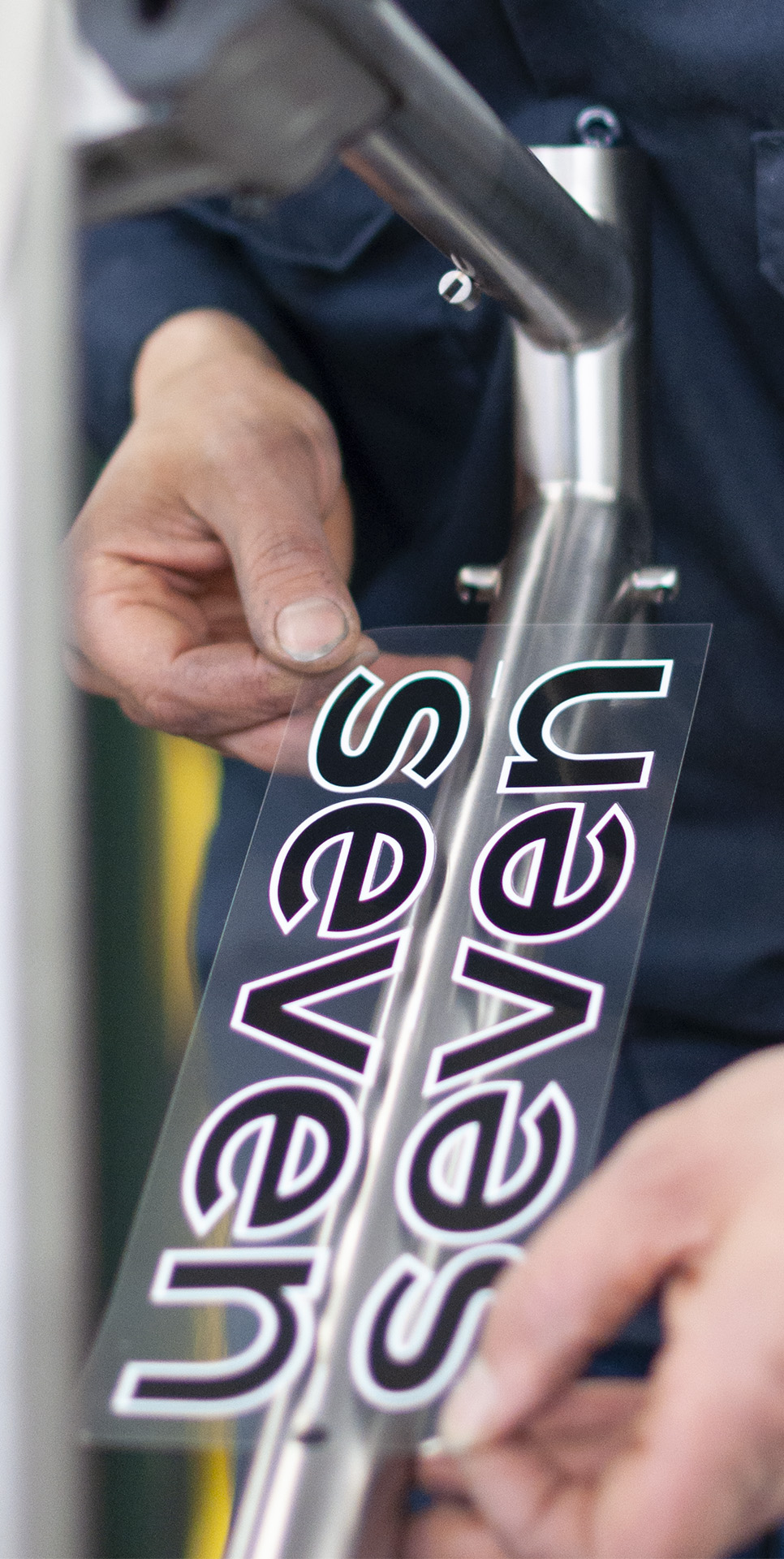Decal Application Instructions for Dry Transfer Decals
These instructions are for Seven's standard decals. If you have custom vinyl decals, these instructions will not work. Contact us if you have questions.
Decal pack contents
- Two full sets of decals. We include a second set in case you have trouble applying any of the decals.
- One piece of Scotch-Brite for touch up of tubing blemishes or discoloration. Type: very fine, red color.
- Decal application instructions.
Remove the old decals
From Titanium:
Assuming the decals are Seven's standard design, the easiest way to remove them is to Scotch-Brite the decals to remove their protective coating and then use acetone or fingernail polish remover and a lot of elbow grease.
If there is a halo of different colored titanium surface remaining after decal removal, Scotch-Brite the area to elliminate the discoloration.
From Carbon:
Assuming the decals are Seven's standard design, use acetone or fingernail polish remover and a lot of elbow grease. Do not use Scotch-Brite because it will scuff the finish.
Apply the new vinyl decals
Each decal assembly consists of three layers:
- The top layer is called the "protective backing." The outside is white and the inside face is mint green.
- The middle layer is clear and holds the decal itself and is called the "burnishing protector."
- The bottom layer is the "adhesive protector." It's milky in color and somewhat transparent.
- Thoroughly clean surface with a degreaser like Simple Green. Next, use isopropyl rubbing alcohol to remove dirt, grease, and wax. Be sure to leave no soapy residue on the surface.
- Holding the decal assembly sheet, peel away the top protective backing paper from the decal - the white and mint green layer. Fold a small corner of the backing to separate the decal, including the burnishing protector, and the adhesive protector from the entire sheet of backing paper. Slowly and steadily peel the backing sheet off the clear burnishing protector sheet. Be careful while separating the stock so as not to break the bond between the vinyl and the application tape.
- Remove the adhesive protective layer. This will probably fall right off. Make sure not to let the underside of the decal get dirty.
- Position the decal over the frame's surface, taking care to get the correct position on the first attempt. You can't stick the decal down and peel it back off with any success. One trick is to use the adhesive protector sheet you've already removed as a partial holder for the sticky side of the decal. The backing sheet won't stick to the adhesive, so it can make placing the decal much easier. Touch down in the center of the decal graphic first and work your way outward.
- Once positioned, rub the burnishing protector sheet with your fingers, starting from the center of the decal and moving out to the edges, being careful not to trap air bubbles.
- Rub or burnish the entire decal with a Bondo squeegee or some other form of hard plastic applicator. Your thumbnail will work, too. Progress from the center to the edges, being sure not to move or displace the clear burnishing sheet. Hold the sheet down while burnishing to avoid wrinkling the decal.
- Slowly peel off the burnishing sheet. It should fall away. If it's sticking to the decal, rebunish that section of the sheet until it peels away with no effort. Once the decal is mounted, tiny bubbles in the decal will pull themselves down in about a half-hour. Larger ones may be popped with a pin or an Exacto knife and burnished down. As with all pressure-sensitive decals, it takes several days for the bond to set. Avoid major abrasion to the vinyl for about a week.
- Finish the frame with a protectant like furniture polish or any bike-specific frame polish.

